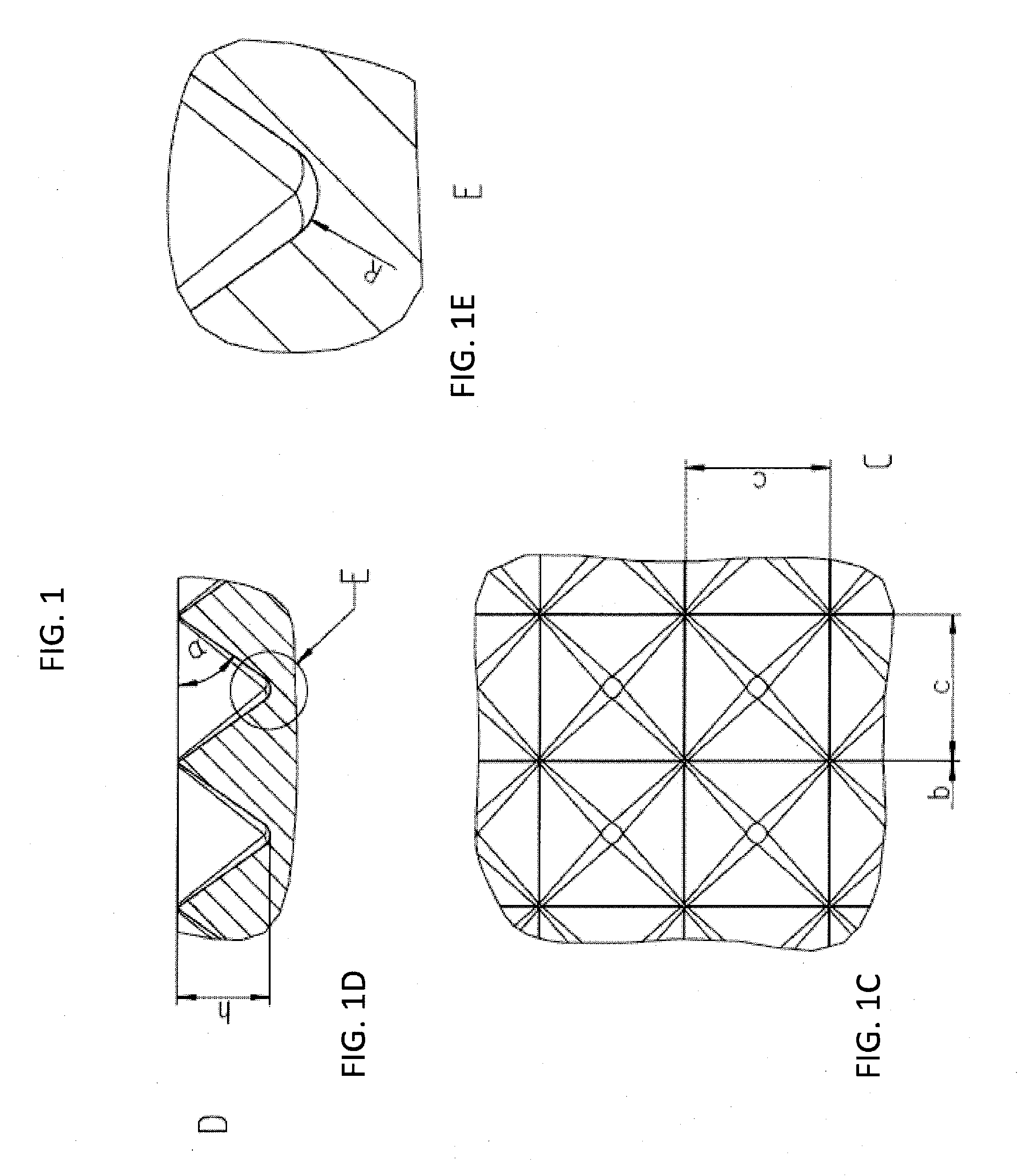Devices for the production of cell clusters of defined cell numbers and cluster sizes
a technology of cell clusters and cells, applied in biochemical apparatus and processes, specific use bioreactors/fermenters, after-treatment of biomass, etc., can solve the problems of inability to perform a medium change, limited number of cell clusters that can be generated, and the inability to reach the number with hanging drop technology
- Summary
- Abstract
- Description
- Claims
- Application Information
AI Technical Summary
Problems solved by technology
Method used
Image
Examples
Embodiment Construction
[0030]The device is preferably a cell culture plate with defined ground cavities allowing defined cell numbers to descend to the ground (by gravity or centrifugation) and get close to each other, making aggregation possible. The design of the cavities maximizes initial cell sliding, maximizes cavity number per surface, promotes physiological cluster formation and supports later cluster harvesting by the following specifications.
[0031]The kind of suspension for initial cell seeding needs to be individually determined according to the individual experimental or clinical needs. The number of cells and the volume of the suspension can be calculated according to the number of ground cavities of the possible embodiments of the present invention and the intended cell number of the individual clusters. The possible number of cells per ground cavity can range from 0 (i.e. seeding less than 1 cell per cavity so that every 2nd cavity has got 1 cell and clonal growth of 1 individual starting ce...
PUM
| Property | Measurement | Unit |
|---|---|---|
| bottom diameter d1 | aaaaa | aaaaa |
| bottom diameter d1 | aaaaa | aaaaa |
| bottom diameter d1 | aaaaa | aaaaa |
Abstract
Description
Claims
Application Information
 Login to View More
Login to View More - R&D
- Intellectual Property
- Life Sciences
- Materials
- Tech Scout
- Unparalleled Data Quality
- Higher Quality Content
- 60% Fewer Hallucinations
Browse by: Latest US Patents, China's latest patents, Technical Efficacy Thesaurus, Application Domain, Technology Topic, Popular Technical Reports.
© 2025 PatSnap. All rights reserved.Legal|Privacy policy|Modern Slavery Act Transparency Statement|Sitemap|About US| Contact US: help@patsnap.com



